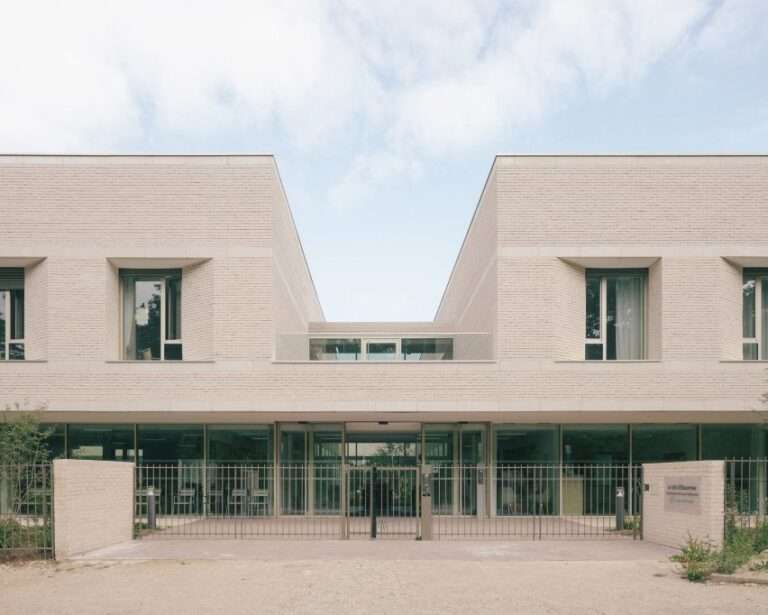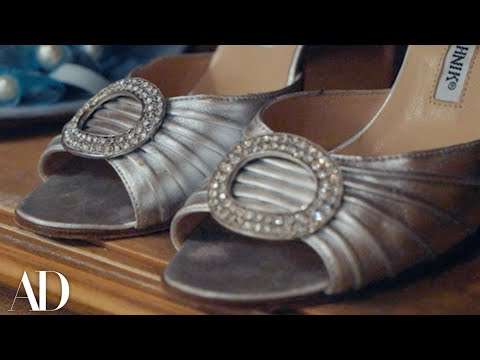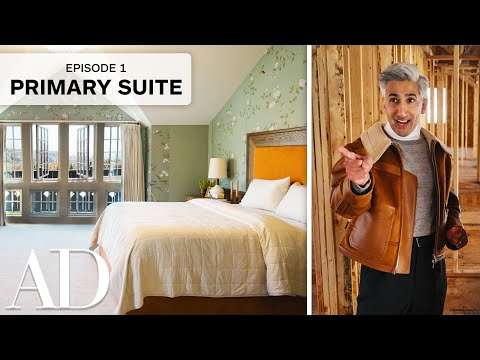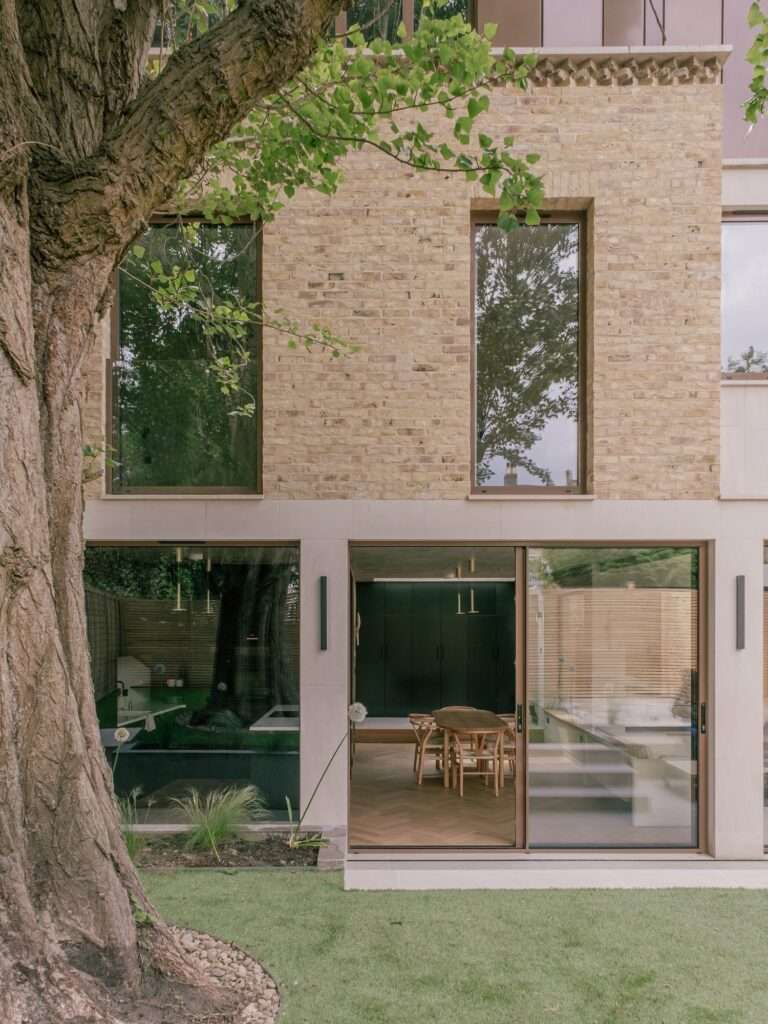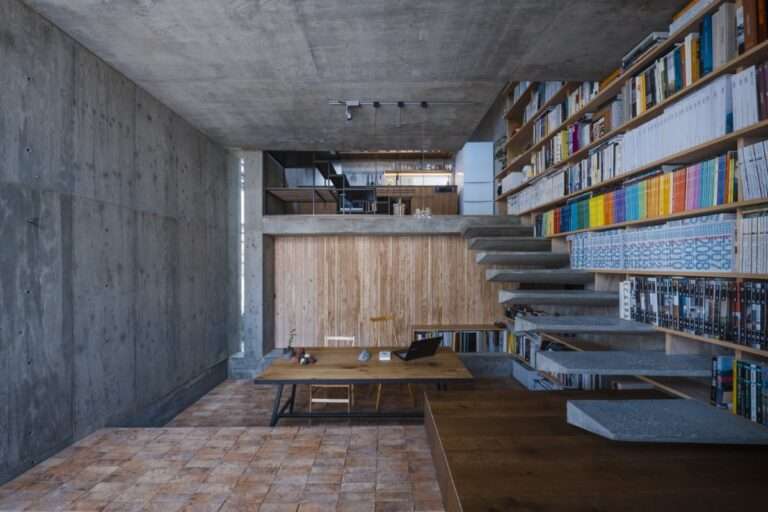London studio Delve Architects has transformed a Victorian house in Camberwell with a cork-clad extension that introduces a bright open-plan kitchen and dining space for entertaining.
Appropriately named Camberwell Cork House, the 20-square-metre extension project replaces an existing kitchen and back room that the studio said was “cramped and dark”.
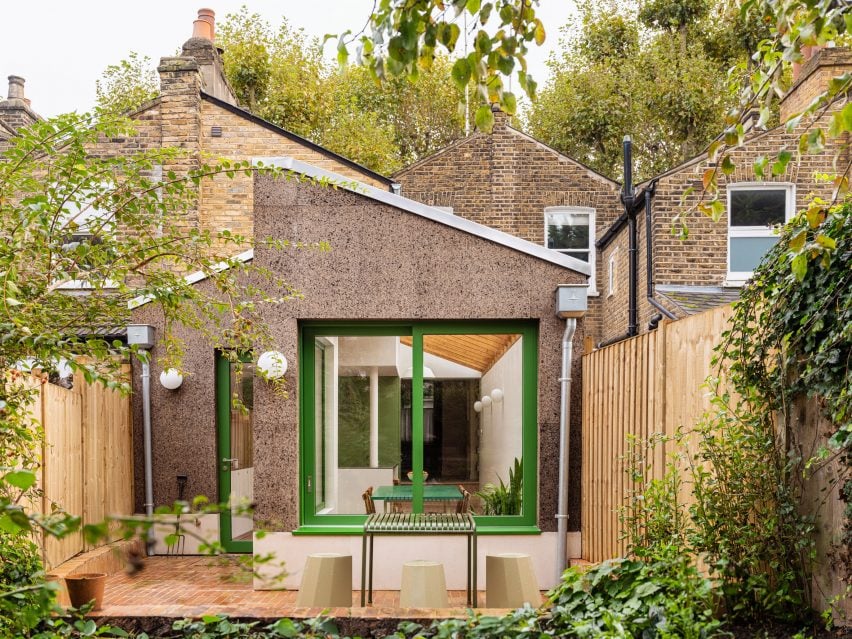
“The kitchen was small, cramped and dark, with a small door into the garden and no visual connection between interior and exterior,” Delve Architects told Dezeen.
“The intention was to maximise sight lines into the long garden and bring in light as much as possible.”
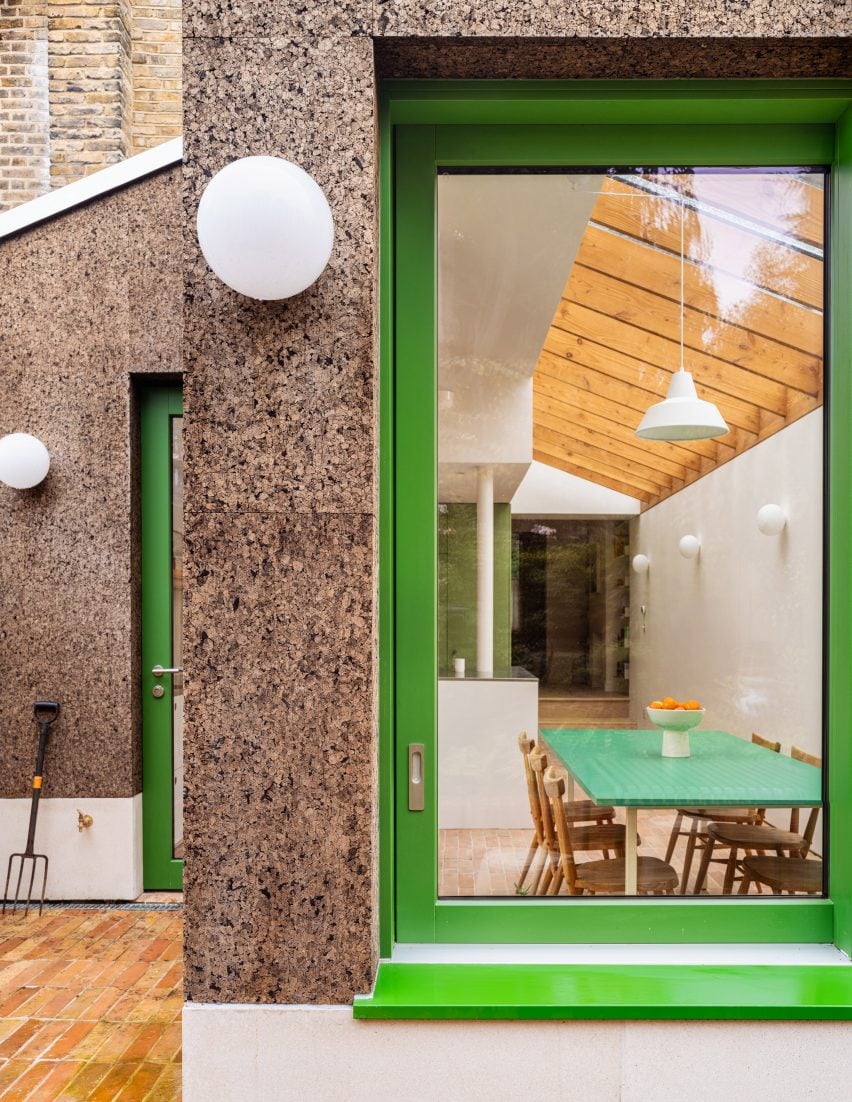
Camberwell Cork House’s dining room now extends out into the garden, enclosed by large triple-glazed windows and a 2.4-metre-high glass door with green-painted frames.
These large glazed areas focus attention on the outside while allowing westerly light to filter into the dining space.
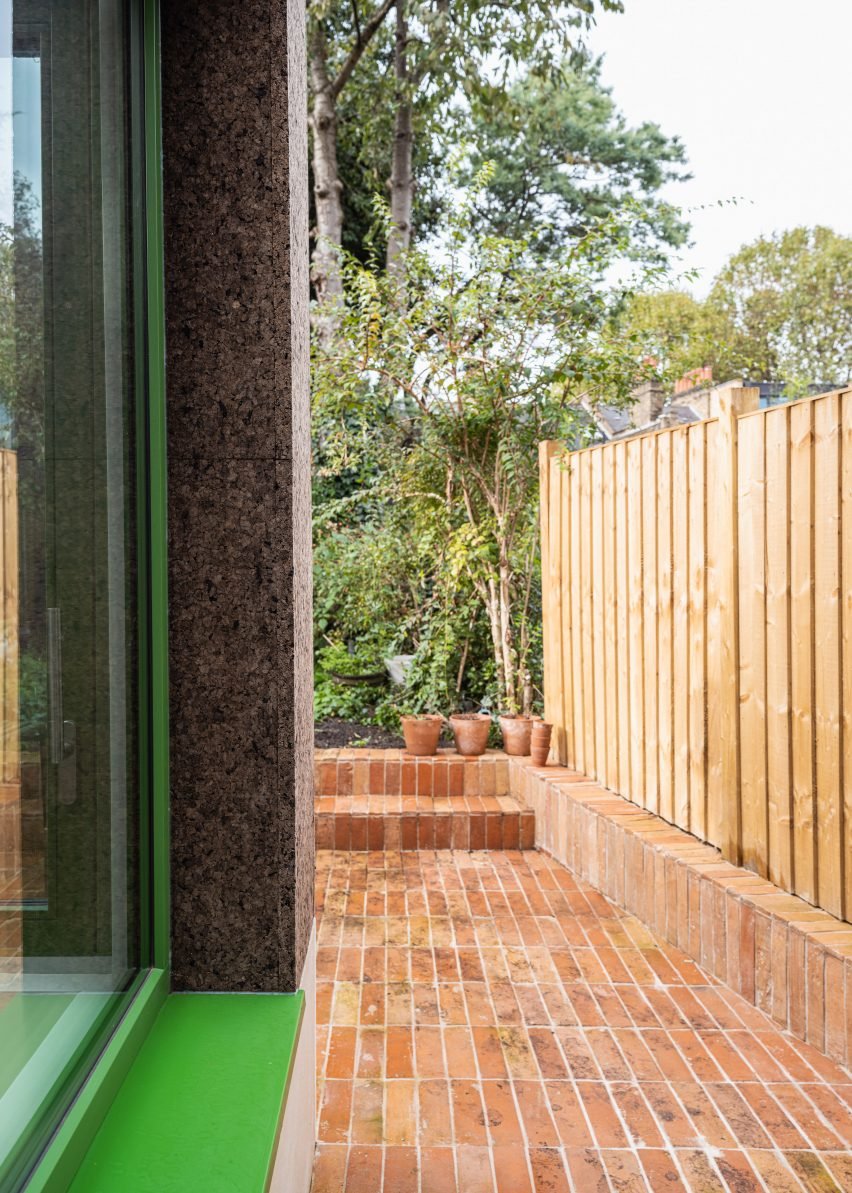
According to Delve Architects, a key move to help make the space feel brighter and airier was to sink the extension, which required a step down from the main living spaces into the dining area.
“It is one of the design principles we propose for Victorian properties as it can often be achieved without major structural implications or underpinning – a simple step, but a highly beneficial one,” explained the studio.
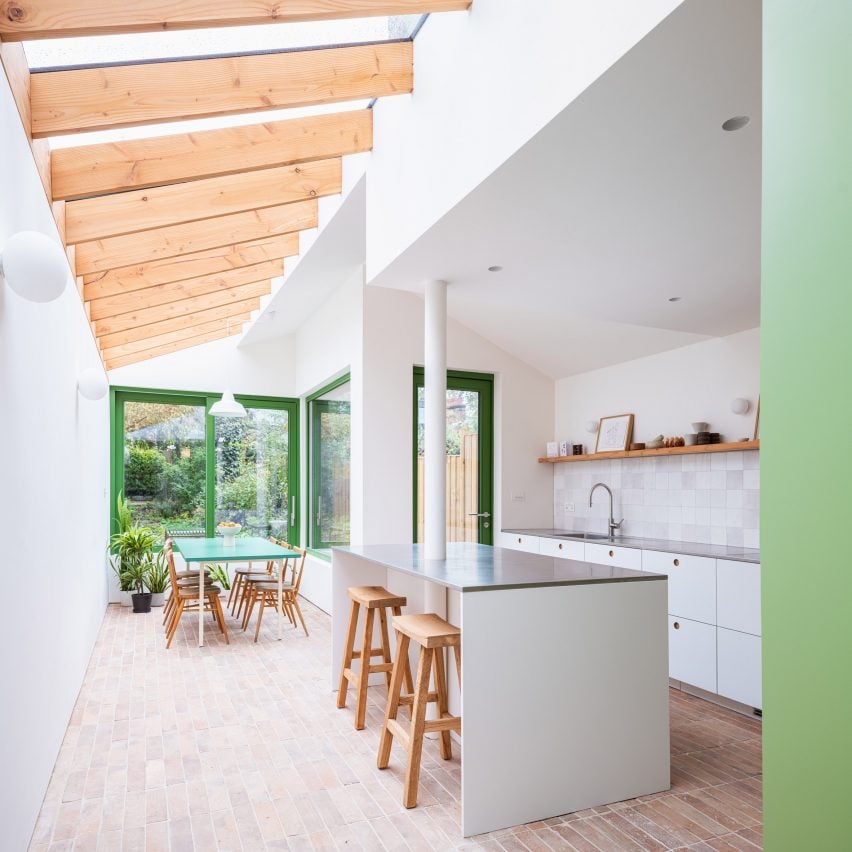
Skylights also run along the length of the extension’s roof to drench the space with light from above.
Further supporting the connection between the home’s interior and the garden is a stretch of brick paving that runs from the patio and into the kitchen.
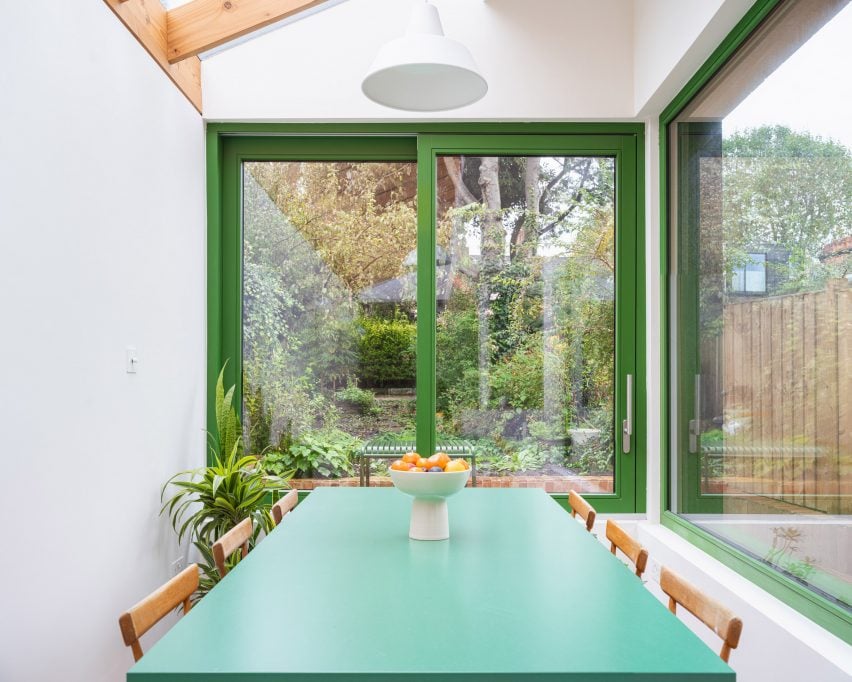
Another key element of the project was the use of cork, a renewable material harvested from the bark of the cork oak tree, which is biodegradable, durable and insulating.
The natural material is used as cladding and insulation, forming part of a wider design strategy focused on minimising carbon emissions and energy bills.
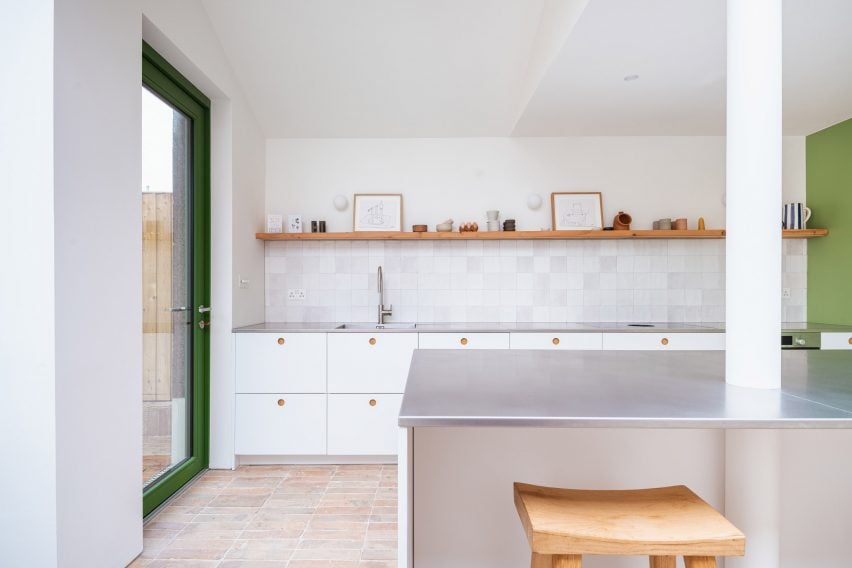
However, Delve Architects aimed to ensure that its use of this contemporary material does not overshadow the existing Victorian architecture.
Cork cladding is only used on the rear side of the home, covering the facade of the extension, while internally it is only used as insulation. The extension also has a butterfly roof to echo the existing streetscape.
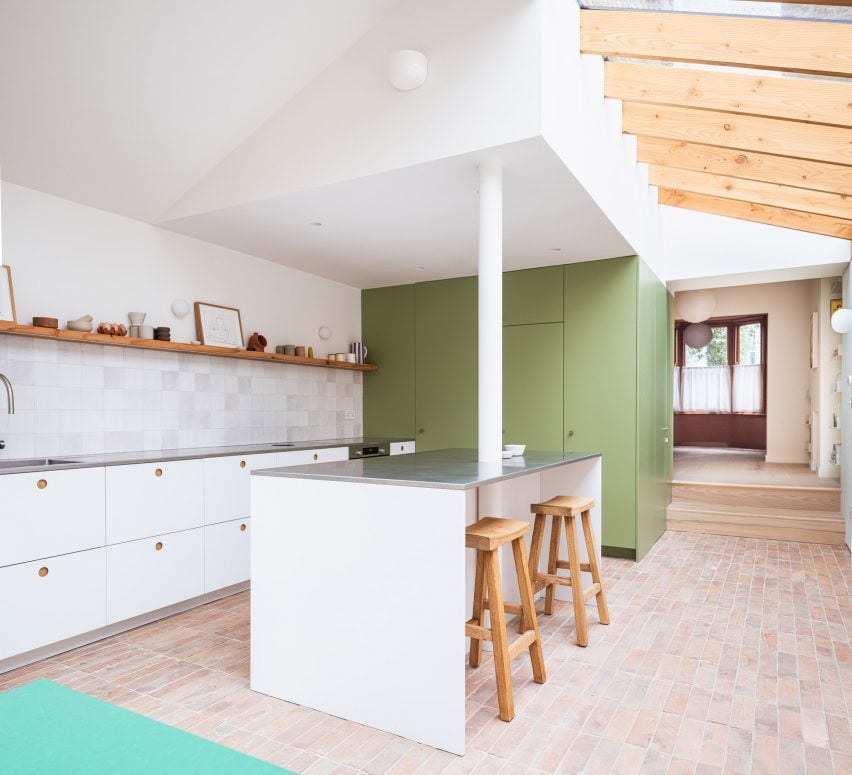
Delve Architects, a small studio set up in 2017 by two school friends based in south London, had not worked with the material before Camberwell Cork House.
According to the studio, by using it as both external cladding and a thermal insulator, the project aims to showcase the potential of cork beyond aesthetics.
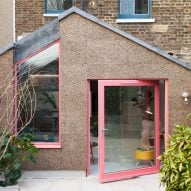
 Cork walls and pink window frames characterise London house extension by Nimtim Architects
Cork walls and pink window frames characterise London house extension by Nimtim Architects
“We want to show how decarbonising can be done at any scale and loved the challenge of working with this natural material,” said co-director Alex Raher.
Cork is used as part of a palette of materials that were chosen for either their low U-values or for being environmentally friendly. Others include hard-wearing terracotta floor tiles in the kitchen and water-based paints made using clay.
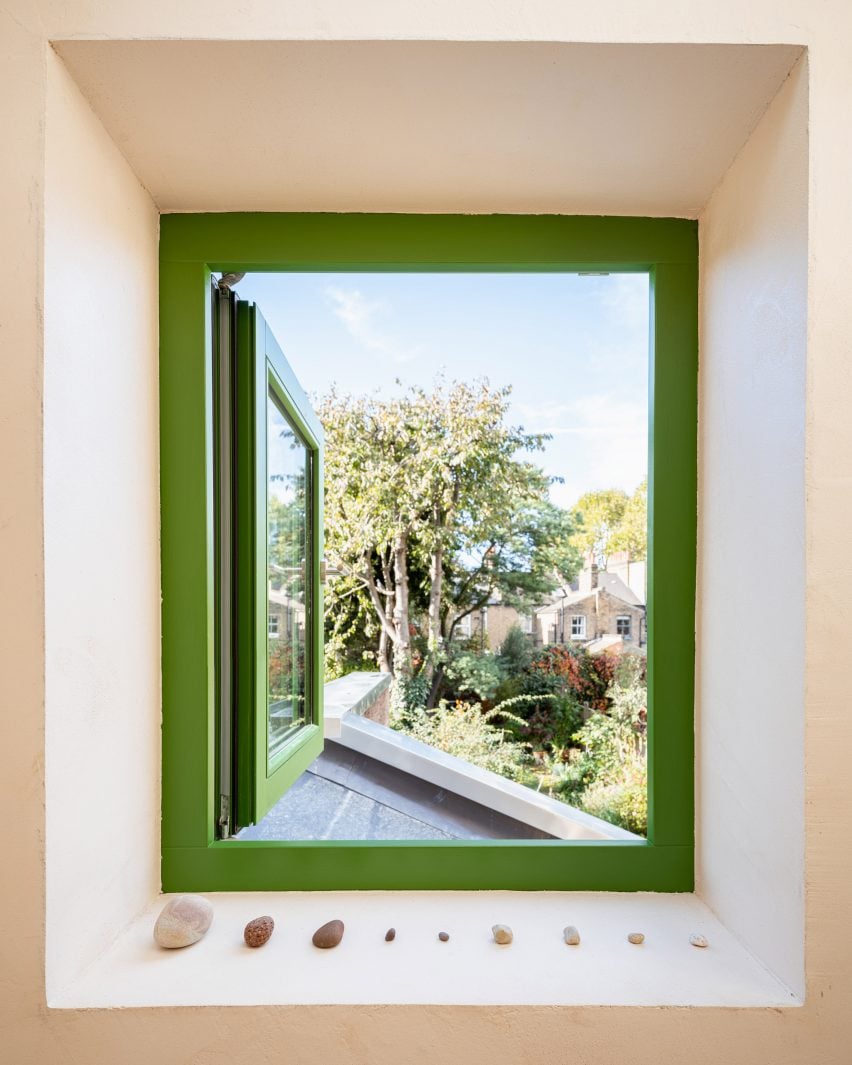
As well as opening up spaces at the back of the terraced house, Delve Architects has introduced a utility room and created a snug lounge at the front of the home.
To create a feeling of warmth, the walls and ceiling of the lounge are painted in a rich Venetian red.
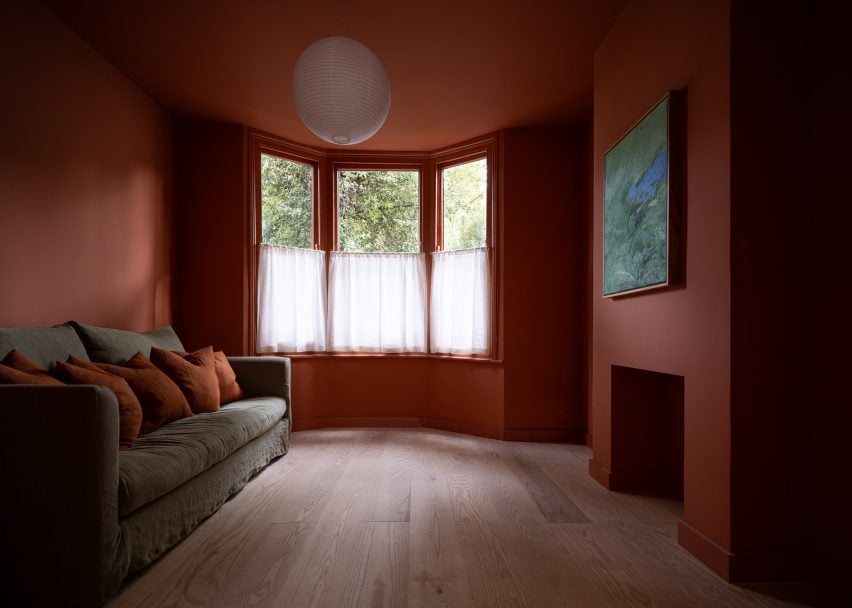
Cork is increasingly being selected as a material for domestic architecture projects.
Other cork-clad houses recently featured on Dezeen include a home in east London by Polysmiths and a residence by Inês Brandão Arquitectura in Portugal that uses the material to camouflage into its surrounding landscape.
The photography is by Fred Howarth.
